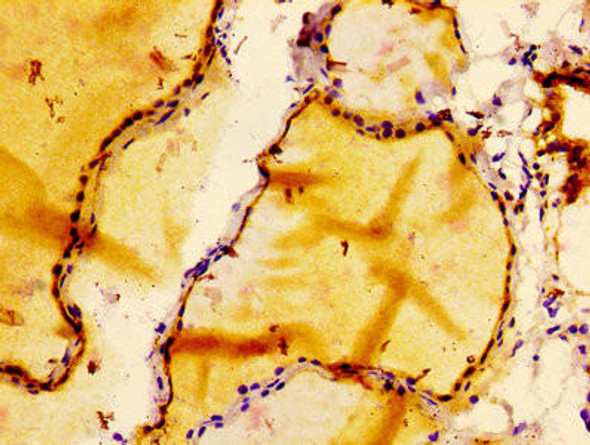Description
SIM1 Antibody (PACO64949)
The SIM1 Polyclonal Antibody (PAC064949) is a valuable tool for researchers studying SIM1, a transcription factor critical for regulating energy balance, metabolism, and neuroendocrine development. This antibody, generated in rabbits, demonstrates high specificity and sensitivity when used in techniques such as Western blotting.SIM1 is known to be involved in central nervous system development, as well as playing a key role in the control of food intake and energy expenditure. Dysregulation of SIM1 has been linked to conditions like obesity and Prader-Willi Syndrome, making it an important focus for research in the fields of neuroscience and metabolism.
By utilizing the SIM1 Polyclonal Antibody, researchers can accurately detect and analyze SIM1 protein expression in various tissues and cell types, paving the way for a better understanding of its functions and potential therapeutic applications. Stay ahead in your research with this reliable antibody from Assay Genie.
| Product Name: | SIM1 Antibody |
| Product Code: | PACO64949 |
| Size: | 50µL |
| Target Names: | SIM1 |
| Species Reactivity: | Human |
| Host Species: | Rabbit |
| Antigen Species: | Human |
| Tested Applications: | ELISA, IF; Recommended dilution: IF:1:100-1:500 |
| Isotype: | IgG |
| Clone ID: | N/A |
| Conjugate: | Non-conjugated |
| Clonality: | Polyclonal |
| Antigen: | Recombinant Human Single-minded homolog 1 protein (347-434aa) |
| Form: | Liquid |
| Buffer: | Preservative: 0.03% Proclin 300 Constituents: 50% Glycerol, 0.01M PBS, pH 7.4 |
| Purification Method: | >95%, Protein G purified |
| Storage: | Upon receipt, store at -20°C or -80°C. Avoid repeated freeze. |
| Aliases: | Single-minded homolog 1 (Class E basic helix-loop-helix protein 14) (bHLHe14), SIM1, BHLHE14 |
| Uniprot ID: | P81133 |
| Background: | Transcriptional factor that may have pleiotropic effects during embryogenesis and in the adult. |
| Research Area: | Neuroscience |









